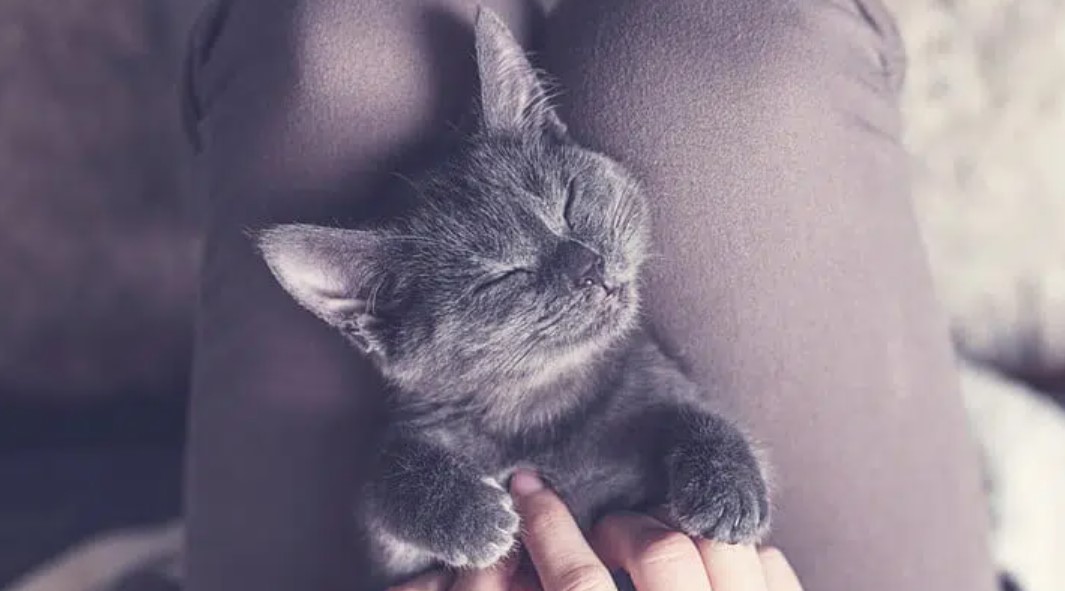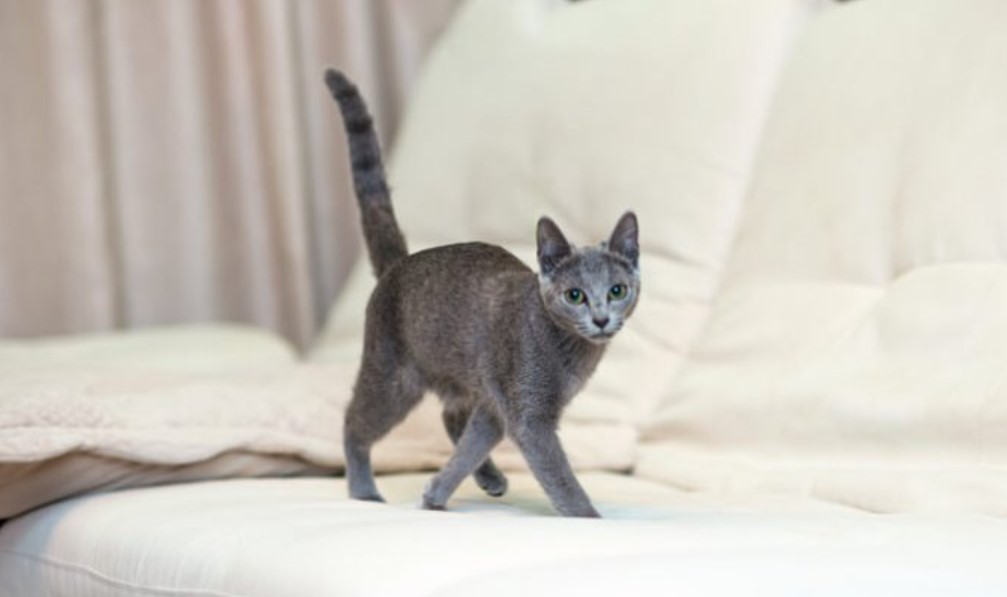A breed of domestic cat is called the Russian Blue. The Russian Blue is the only cat breed in the world to sport a gray-blue, short-haired, very dense DOUBLE COAT with colorless hair tips that create a silver shimmer in the light (no genetic silver!)
Size: small – medium
Weight: male/female 2.5-4.5/ 3.5-6.5
Life expectancy: Maximum 20 years
Physique: Very slim, small, and petite cat
Coat colors: blue
Peculiarities in appearance: The Russian Blue is the only breed of cat that has a double coat. Fur and undercoat are the same length, causing the fur to stand up;
Breed type: natural hair breed;
Country of origin: Russia;
Recognized cat breed by FIFE, WCF, TICA, GCCF
Typical breed diseases: Actually a strong breed with a good immune system, beware of bladder stones.
The nature of the Russian Blue

The essence of the breed can be distinguished by the three breeding branches. The “American” is clearly more open-minded and stranger-friendly than her two conspecifics. The Siberian-Scandinavian cat is extremely shy and therefore rare to find. The mean value of both characters is the English Russian Blue. The calm and reserved temperament combines all three breeding branches. In general, the Russian Blue is a very calm-loving cat that is neither pushy nor particularly energetic.
Appearance

Typical of the breed is its blue fur in harmony with the bright green eyes. She also has an unmistakable “smiling” facial expression that makes her extremely likeable.
However, the appearance of the Russian Blue varies by global breeding area. The breed is divided into English, Siberian-Scandinavian and American breeds. The English variant is strong, her coat shimmers medium blue and her eyes are green. The fur of their smaller relatives from the Siberian-Scandinavian area is colored significantly darker. The American Russian Blue has a very elegant and silvery shimmering coat. In addition to these three main breeding lines, there are other hybrids that have not yet been recognized.
Colors and coat markings
The Russian Blue is only recognized with the color blue solid (single colour). Coat markings such as tabby patterns or white spots are criticized as faults. Only the tail can and may have ring-shaped patterns. Kittens may have markings (blue on blue) but these will fade over the course of the first year of life.
History and origin

The cradle of the Russian Blue cat is not far south of the Arctic Circle – in the cold north of Russia. The breed probably came to England in the second half of the 19th century together with Russian sailors. Within a few years, she developed into one of the most popular pedigree cats, not only in the land of the Tsars. After the Second World War, their existence rapidly dropped. In order to maintain the population, the natural breed was mated with British Shorthair, European Shorthair, and Siamese cats. These crossings are the starting point for the current appearance of the Russian Blue.
Notes on keeping the Russian Blue
The reserved nature of the Russian Blue is best in a quiet and relaxed household. The cat has nothing to do with large families and small children. Ideal are owners who can spend a lot of time with the sensitive animal. In order to feel good, she needs a routine daily routine – also together with a conspecific. Sometimes it happens that she sheds her shy manner and goes up to true sporting top performances.
Regular outdoor access is very important for a Russian Blue so that she can have adventures in the great outdoors and pursue her own interests.
Health

The Russian Blue cat is usually endowed with a strong immune system. Unfortunately, bladder stones can occur and need to be surgically removed. It is advisable to get a kitten from a breeder. The proof of a family tree provides information about a pure and healthy lineage.
A species-appropriate and balanced diet for the cat is important for a strong immune system and a long and happy cat life. Obesity is considered to be the biggest and most dangerous consequence of poor nutrition. Also important is the annual check-up at the vet and the associated vaccinations against cat flu and cat disease. Outdoor cats should also be vaccinated against rabies and feline leukemia.





























